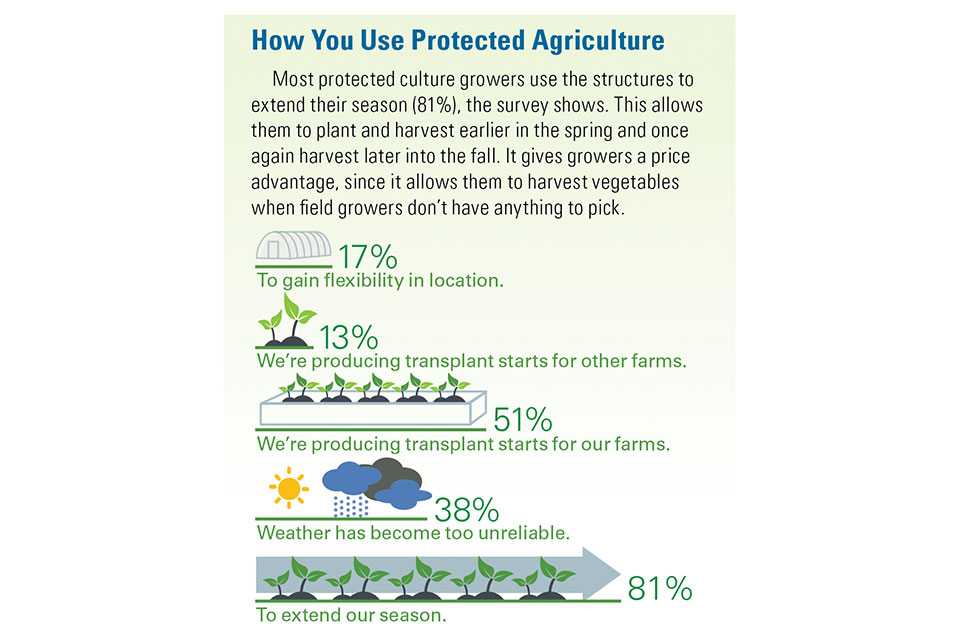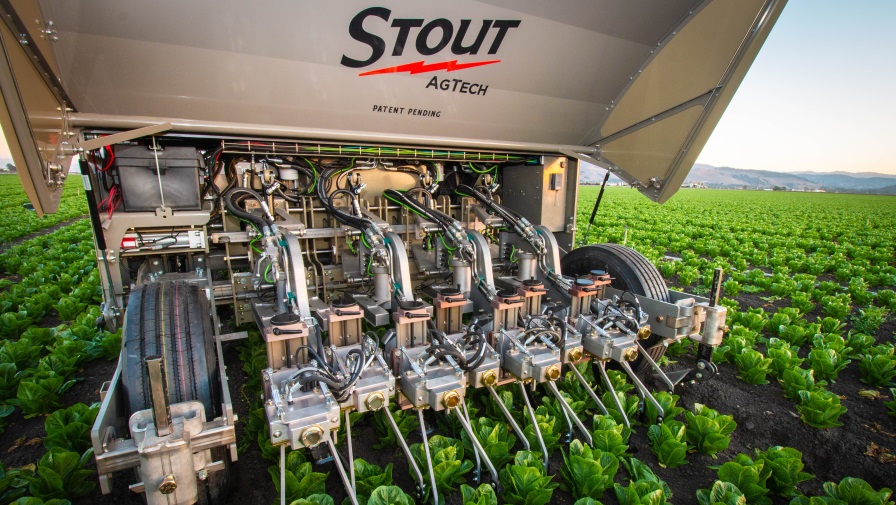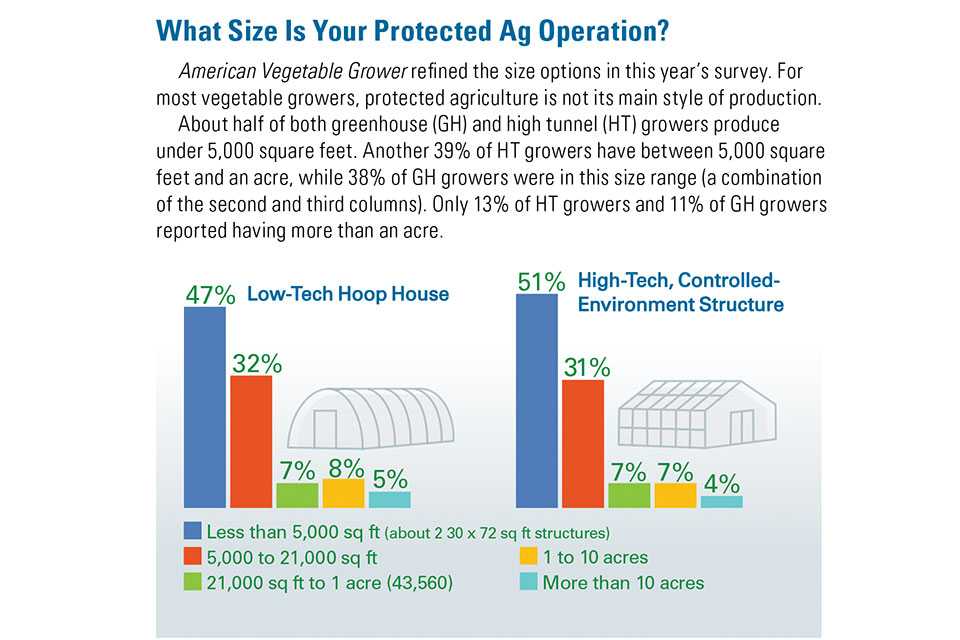Vegetable Growers Diversify Crops Grown Under Cover

The American Vegetable Grower team wanted to dig more deeply into how the industry defines all areas of protected agriculture this year. And so it refined many of the questions it asked about growing vegetables in protected culture.
A significant component of vegetable growers currently grow in greenhouse (GH), high tunnel (HT), and low tunnel (LT) — 43% — and many plan on adding protected culture to their farms (34%).
Among growers who use protected agriculture, 53% say they grew in HT in 2019 while in 2020 that jumped to 61%. This increase may be partly due to the Natural Resources Conservation Service (NRCS) grants for HT growers. Another 4% grow in other types of indoor production such as vertical farms.
What Are You Growing?
In the GH, the primary crops are tomatoes, peppers, herbs, and cucurbits (most likely cucumbers). As expected, these are higher-value crops, which are more appropriate for the more expensive greenhouse structures that cost more to build and to operate with their environmental control systems.
In HT, the crop selection is much more diverse than in GH. In addition to the GH crops mentioned above, HT growers are raising leafy greens, berries, carrots, cole crops, legumes, onions, and several other choices. Berry, carrot, and legume production was much higher in HT than in GH.
For LT producers, all of the above crop choices are also raised. However, the leading LT crops are cole crops, carrots, legumes, berries, and leafy greens.
Some growers raise non-vegetable crops in one or both of these types of structures. The largest category by far is ornamentals with 48%, but other choices include fruit other than berries, cannabis, and hemp.
A rather large percentage of protected culture growers, 33%, claimed they grew “other” crops not in the survey list. Delving deeper, some of these include figs, tropical crops, watermelons, strawberries, citrus, cut flowers, bedding plants, herbs, raspberries, persimmons, tobacco, and pole beans.
Funds Available for Building High Tunnels
For field growers who may want to get their feet wet (raising vegetables in high tunnels, be aware that the NRCS has grants to help with high tunnel costs. You can apply through the Environmental Quality Incentives Program, which will cover most of the cost.
Contact your local NRCS office for information and take advantage of these funds while they are still available. They won’t last forever. Here is their website: http://extension.msstate.edu/publications/publications/high-tunnel-suppliers.
Thank you to our sponsors!














